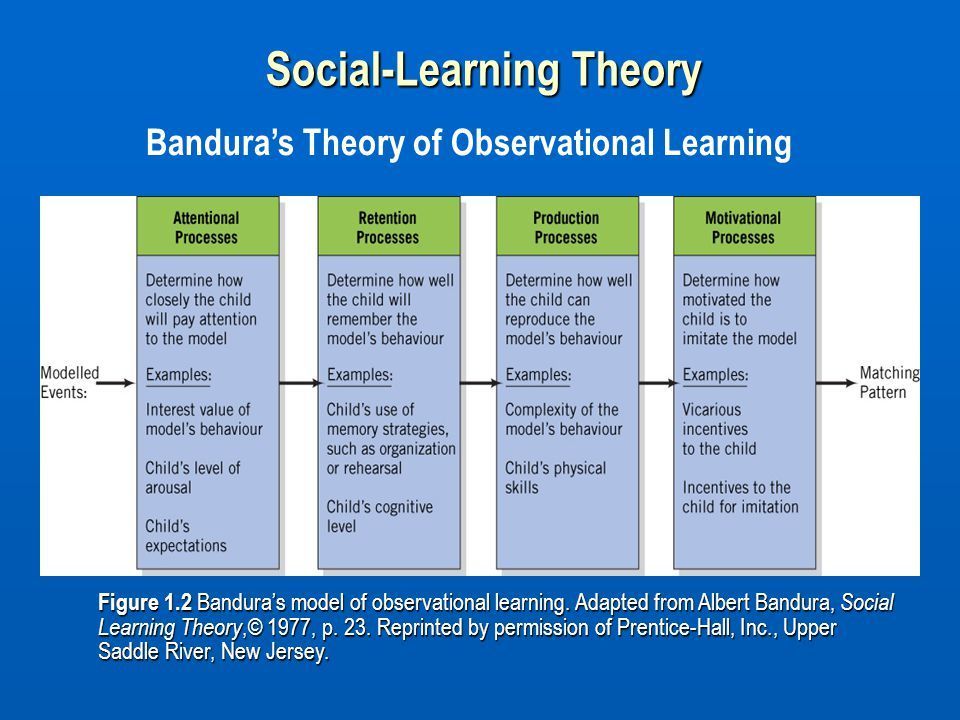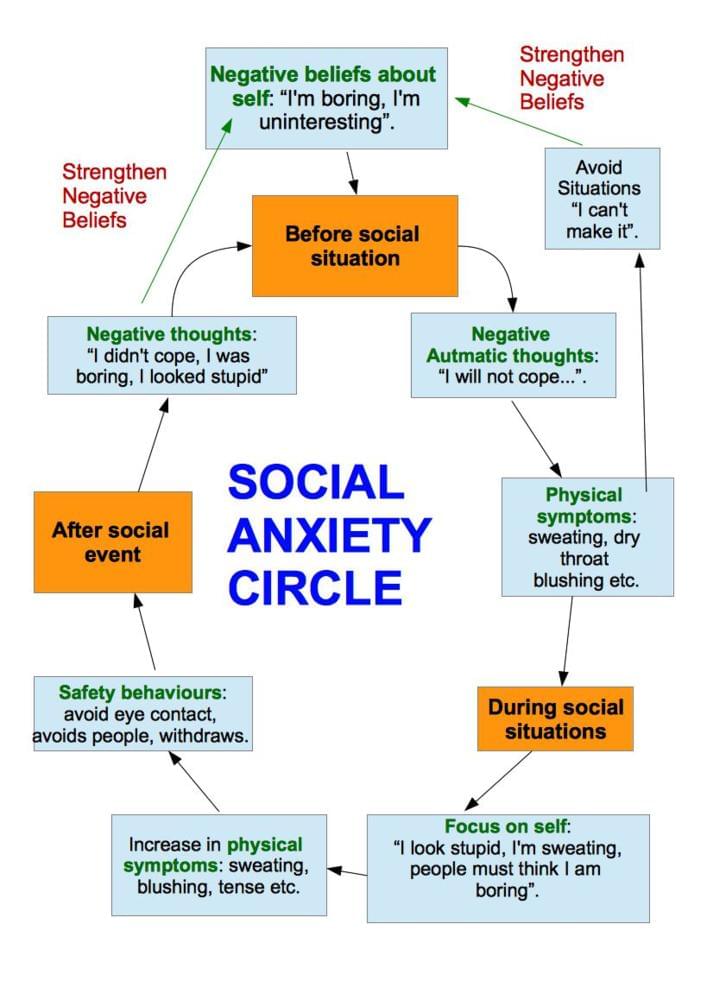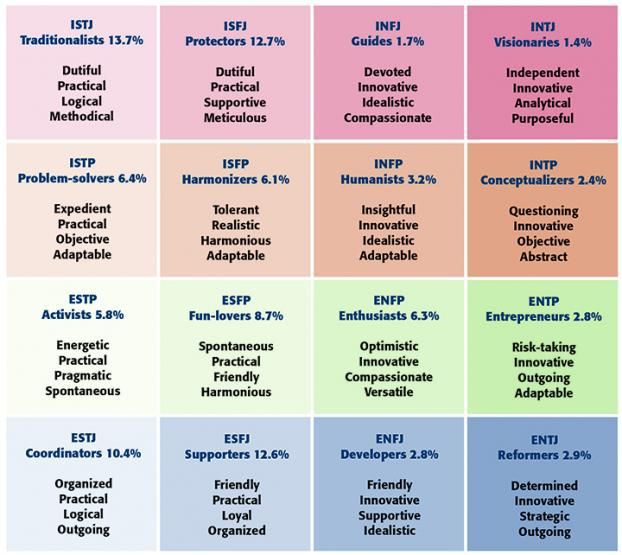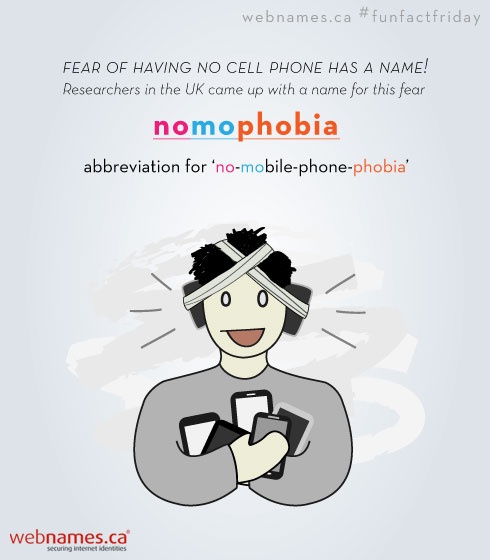Social learning theory psychology
What is Social Learning Theory?
Social work theories can be taken from many disciplines such as criminology, law, education, politics, sociology and psychology. Individually, each discipline attempts to explain human behavior within its field of study. However, to ensure that you, as a social worker, are able to explain a particular behavior it is important you find the appropriate theory, or a combination thereof, regardless of the original discipline. One theory that may prove helpful for some of your clients is the social learning theory.
While social learning theory comes from psychology, its tenets are very much applicable to the study of social work. This introduction to social learning theory addresses its foundation, elements, strengths and weaknesses, along with its application in social work. Included is a list of books and online resources to learn more.
Social learning theory suggests that social behavior is learned by observing and imitating the behavior of others. Psychologist Albert Bandura developed the social learning theory as an alternative to the earlier work of fellow psychologist B.F. Skinner, known for his influence on behaviorism. While behavioral psychology focuses on how the environment and reinforcement affect behavior, Bandura put forth that individuals can learn behavior through observation.
The social learning theory has four mediational processes that help determine whether a new behavior is acquired:
In addition to the behavior, rewards and punishment that follow will be studied by the observer. If the observer perceives the rewards to be greater than the costs (punishment) then they will most likely imitate the behavior. If, however, the vicarious reinforcement is not valued enough by the observer, they will not model the behavior.
In 1961 and 1963, Albert Bandura conducted a series of experiments to determine whether social behaviors (aggression) could be accrued by observation and imitation. The research that entailed children observing a model punch an inflatable doll looked to support the idea that children emulate their behavior by watching others.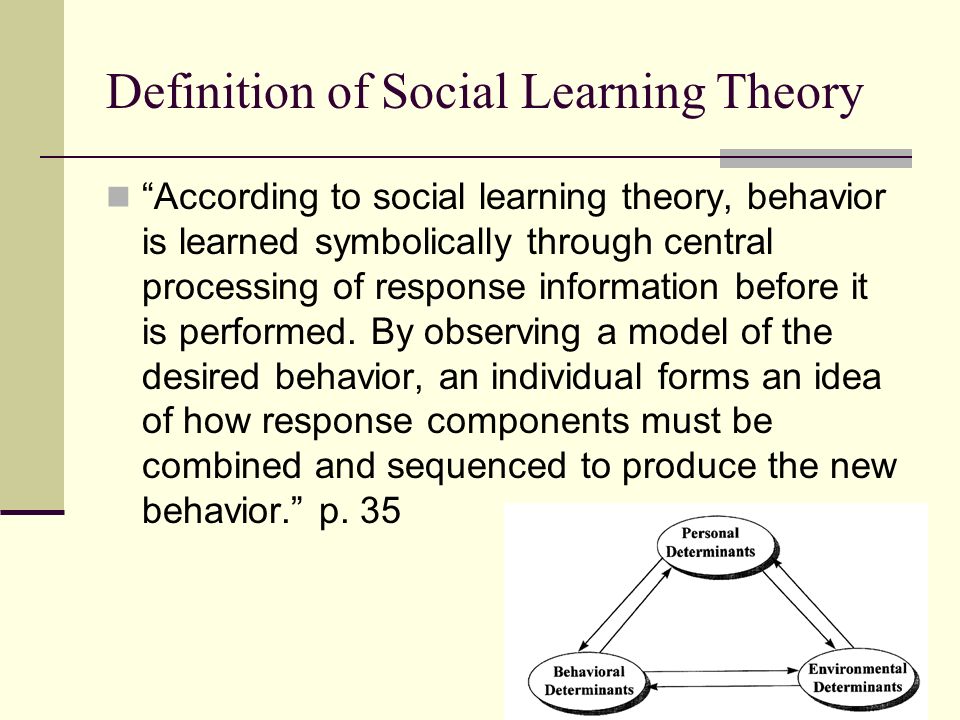 These experiments were collectively known as the Bobo doll experiments.
These experiments were collectively known as the Bobo doll experiments.
Supported by his findings in the Bobo doll experiments, Bandura developed the social learning theory in 1977. The theory later evolved into the social cognitive theory in 1986 which postulates that learning takes place in a social framework with an ever-changing and shared interaction between the person, environment and behavior.
Social learning theory is grounded by several key assumptions:
Social learning theory examples in everyday life are common, with one of the most evident being the behaviors of children, as they imitate family members, friends, famous figures and even television characters. If a child perceives there is a meaningful reward for such behavior, they will perform it at some point.
Social media presents plenty of social learning examples with people imitating others whether acting a movie scene, copying dance moves from a music video, and not the least, the many social media challenges people attempt.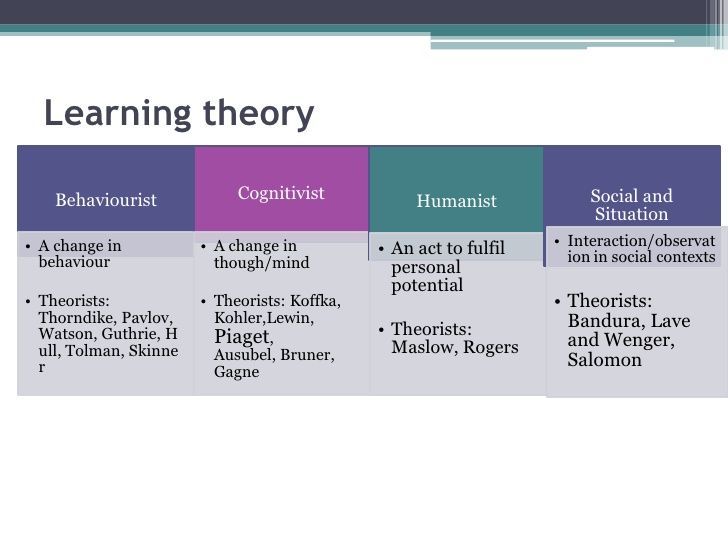 This frenzied behavior is typically spurred by the desire to be socially accepted or liked.
This frenzied behavior is typically spurred by the desire to be socially accepted or liked.
New employees in the workplace may imitate the behavior of their peers in an effort to conform to the work culture. Or, they may model coworkers’ behavior to help earn a good standing with a superior.
Students may emulate fellow students, celebrities and mentors as a means to fit in or garner attention. While positive behaviors are imitated, problematic behaviors are modeled as well.
One of the primary strengths of social learning theory is its flexibility in explaining the differences in a person’s behavior or learning, i.e., when there is a change in a person’s environment, the person’s behavior may change.
An additional strength of the social learning theory is that it allows for different ways of learning. A person can learn through observation or direct experiences.
Where the theory falls short is where it neglects the importance of accountability in one’s actions.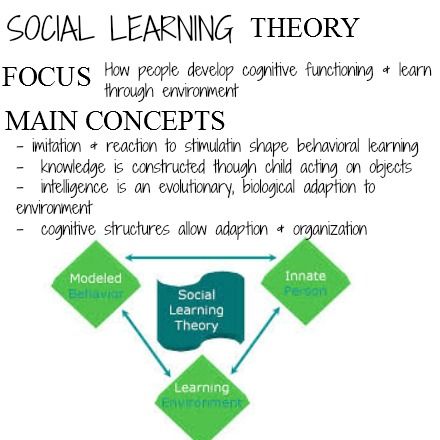 By placing greater weight on the environment, the theory assumes one’s behavior and actions are determined by society, not by how a person handles or processes information.
By placing greater weight on the environment, the theory assumes one’s behavior and actions are determined by society, not by how a person handles or processes information.
The social learning theory further ignores ordinary developmental milestones. Although children do not mature at identical rates, some normal milestones may still occur irrespective of the environmental setting.
The theory further fails to account for all behavior, more specifically in the case when there is no apparent role model for the observer to emulate.
Social learning theory posits that people emulate the behavior they observe in their environment, especially if that behavior is reinforced in others. For example, if a child observes their parents going to work every day, volunteering at a local community center and helping their significant other with tasks around the home, the child is likely to mimic those behaviors. If rewarded, these behaviors become reinforced and most likely repeated by the individual.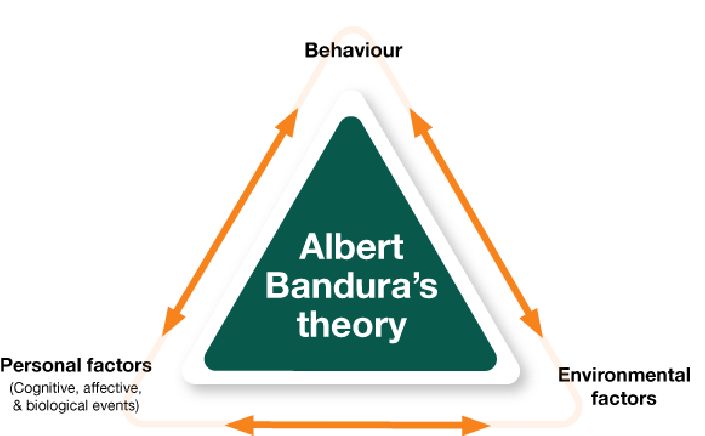
This premise applies to troublesome behaviors as well. A person who observes someone treating others poorly and being rewarded for it may follow suit. Social workers can use social learning theory to identify the behavioral models a client may be emulating and use that information to help correct negative behavior, such as underage drinking, drug use or unprotected sex.
Two areas of application of social learning theory in social work include research and intervention. Researchers can use the theory to understand how aggressiveness and violence can be transferred through observational learning . The theory can further be used to investigate how positive role models can foster desirable behaviors and promote social change.
As an intervention tool, a social worker can implement social learning theory to influence positive new behaviors by altering the reinforcement , whether positive or negative, associated with the source of the issue. It is important to note that to effectively apply social learning theory principles as an intervention, it is essential a social worker includes the use of other methods of work such as symbolic coding, stress management and vicarious reinforcement.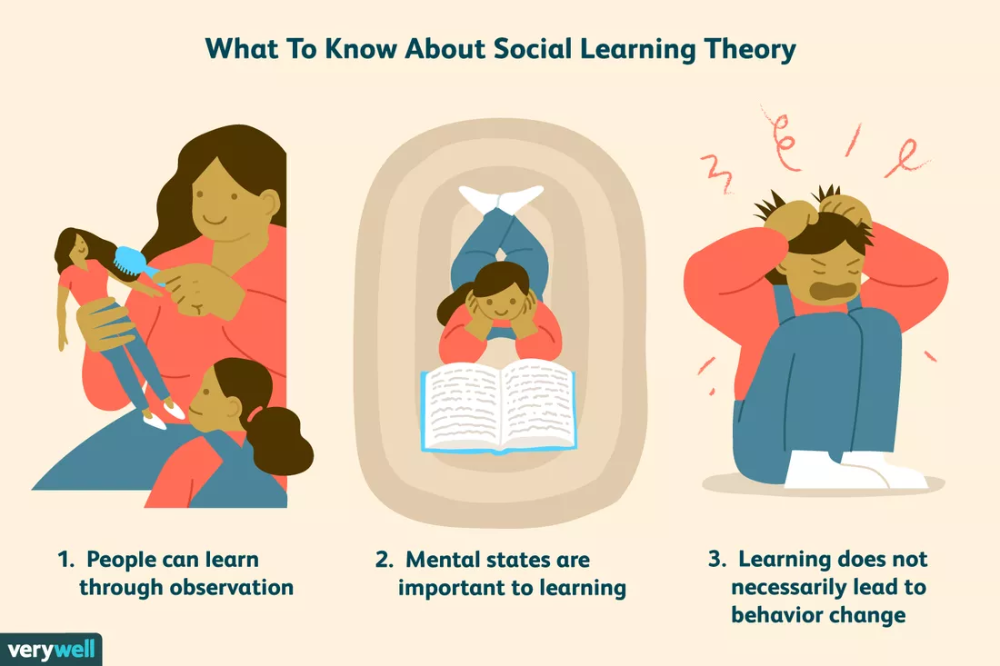
If you are a current student in a social work program you will discover additional applications of social learning theory along with how to incorporate it with other social work theories, practices and techniques.
Social learning theory explains complex behavior by acknowledging cognitive factors and the role they play in deciding whether to imitate behavior. However, it does not account for how we develop a wide range of behavior based on thoughts and feelings. We have a significant amount of control over our behavior and, as such, we don’t necessarily reproduce poor behavior, like violence, merely because we experience it.
Modifying and renaming social learning theory to social cognitive learning in 1986, Bandura offered a more fitting framework for how we learn from our social experiences.
Social learning theory disregards the influence of biological factors, such as hormones and genetics, on behavior. This limits a person’s behavior to either nature or nurture, rather than recognizing that behavior is the interaction of both one’s biology and environment.
While social learning theory demonstrates that behavior, whether positive or negative, can be taught or adapted through observation, it is essential as a social worker that you employ additional relevant practices and social work theories that account for other factors that may play a role in a client’s behavior.
Here are several social learning theory related books and online resources you may find helpful throughout your social work education and career.
Launch your career in social work by earning a degree in social work.
Updated: February 2022
Social Learning Theory | Psychology Today
Reviewed by Psychology Today Staff
The basis of social learning theory is simple: People learn by watching other people. We can learn from anyone—teachers, parents, siblings, peers, co-workers, YouTube influencers, athletes, and even celebrities. We observe their behavior and we mimic that behavior.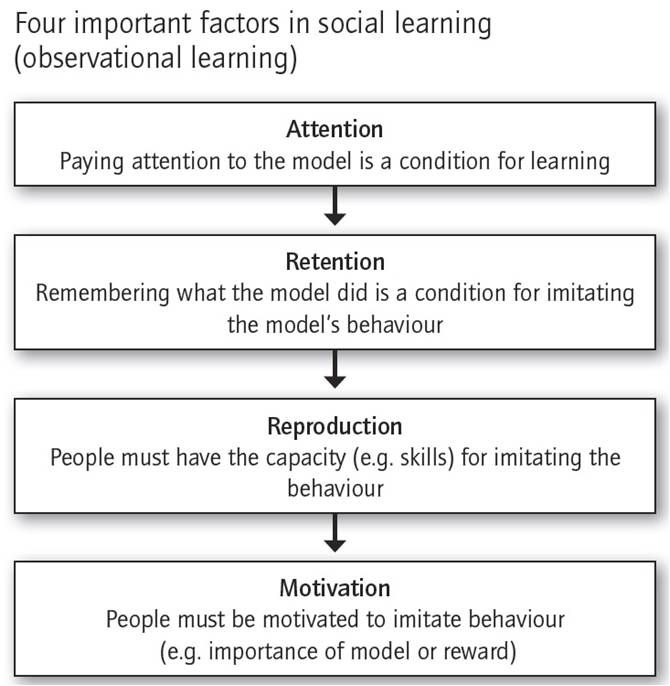 In short, we do what they do. This theory is also known as social cognitive theory.
In short, we do what they do. This theory is also known as social cognitive theory.
Contents
- How We Observe and Learn
- What the Bobo Doll Taught Us
- Different Learning Theories
How We Observe and Learn
Social learning theory, developed by psychologist Albert Bandura, uses theories of classical and operant conditioning. But in this theory, the environment plays a large part in learning. We model the behavior of the people around us, especially if we find these models similar to ourselves or if we want to emulate them.
What are the elements of social learning theory?
There are different parts to this theory.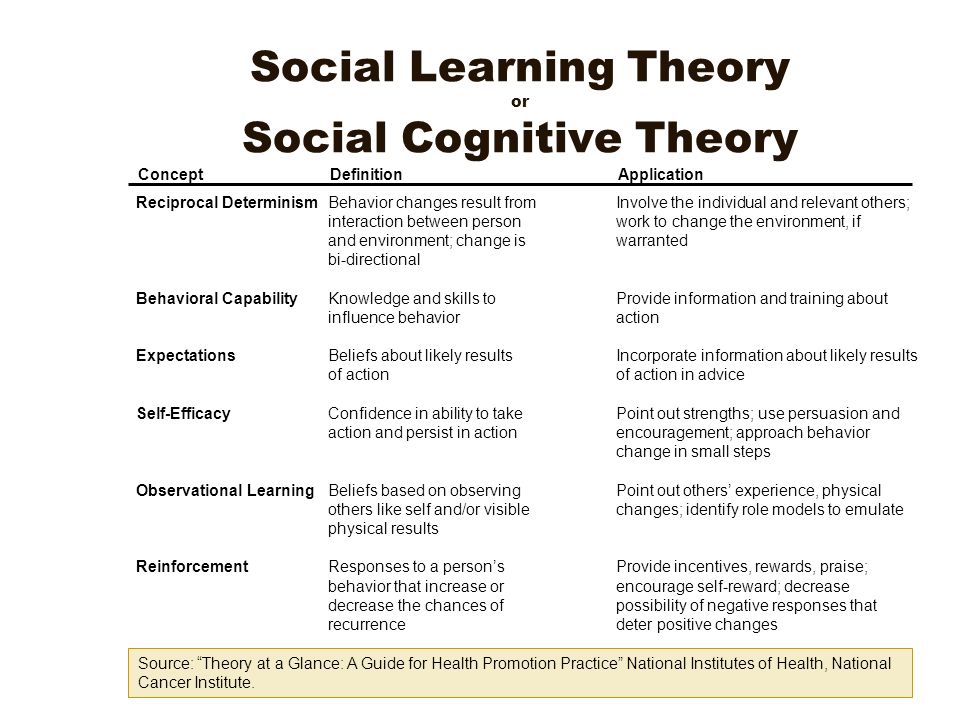 First, we learn by observing others. Second, our mental state is important in the learning process. Third, learning doesn’t mean there will be a change in behavior.
First, we learn by observing others. Second, our mental state is important in the learning process. Third, learning doesn’t mean there will be a change in behavior.
What is a good example of social learning theory?
The YouTube influencer is a good case in point. If you like a particular influencer you may well want to model your behavior after hers. If she enjoys a certain brand of shampoo, then you may well imitate her by purchasing that brand.
What are the processes of observational learning?
Observational learning requires these four processes: attention, retention, reproduction, motivation. You have to pay attention to imitate behavior, retain or remember the behavior, reproduce the behavior, be motivated to reproduce it.
What the Bobo Doll Taught Us
Bandura developed what famously became known as the Bobo Doll experiments.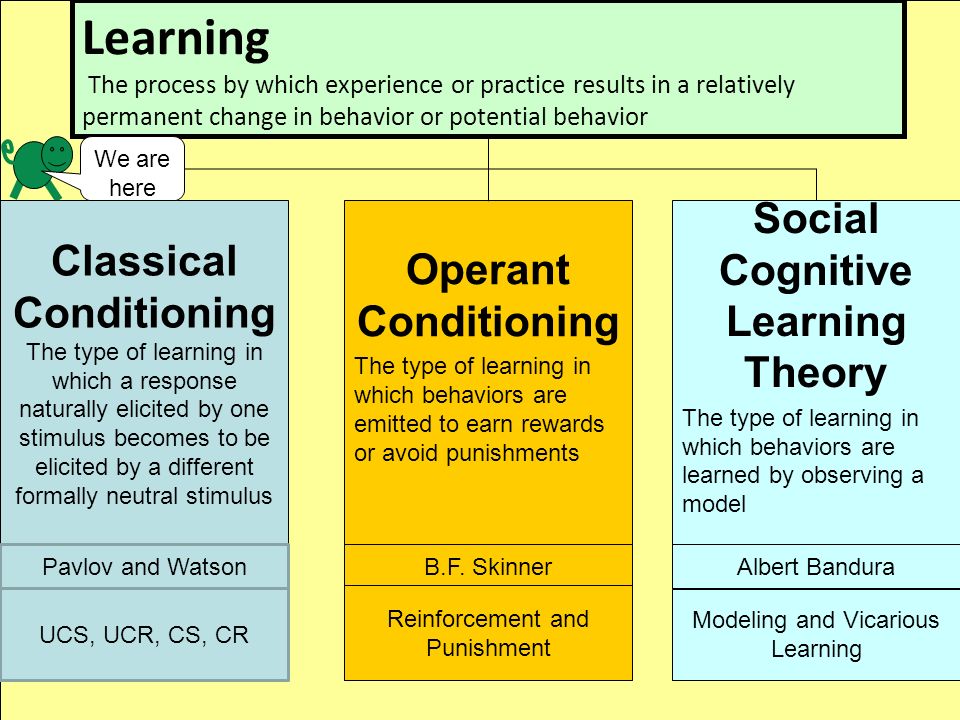 In these studies, children watched adults model either violent or passive behavior towards a toy, the Bobo Doll. What the children saw influenced how they themselves subsequently interacted with the doll. Specifically, children who observed violent behavior imitated this behavior and were verbally and physically aggressive toward the doll. Children who witnessed nonviolent behavior behaved less aggressively toward the doll. In recent years, some psychologists have called Bandura’s original findings into question, labeling his experiments as biased, poorly designed, or even unethical.
In these studies, children watched adults model either violent or passive behavior towards a toy, the Bobo Doll. What the children saw influenced how they themselves subsequently interacted with the doll. Specifically, children who observed violent behavior imitated this behavior and were verbally and physically aggressive toward the doll. Children who witnessed nonviolent behavior behaved less aggressively toward the doll. In recent years, some psychologists have called Bandura’s original findings into question, labeling his experiments as biased, poorly designed, or even unethical.
What did we learn from the Bobo Doll experiment?
Albert Bandura concluded that children learn aggression, violence, and other social behaviors through observation learning, or watching the behaviors of others. On the opposite end, kindness and compassion can be imitated as well.
Is social learning theory still viable and applied?
Despite the criticisms, Bandura’s larger theory is still applied by psychologists seeking to understand the roots of behavior and mood, the importance of role models, and to glean insight into consumer purchasing decisions.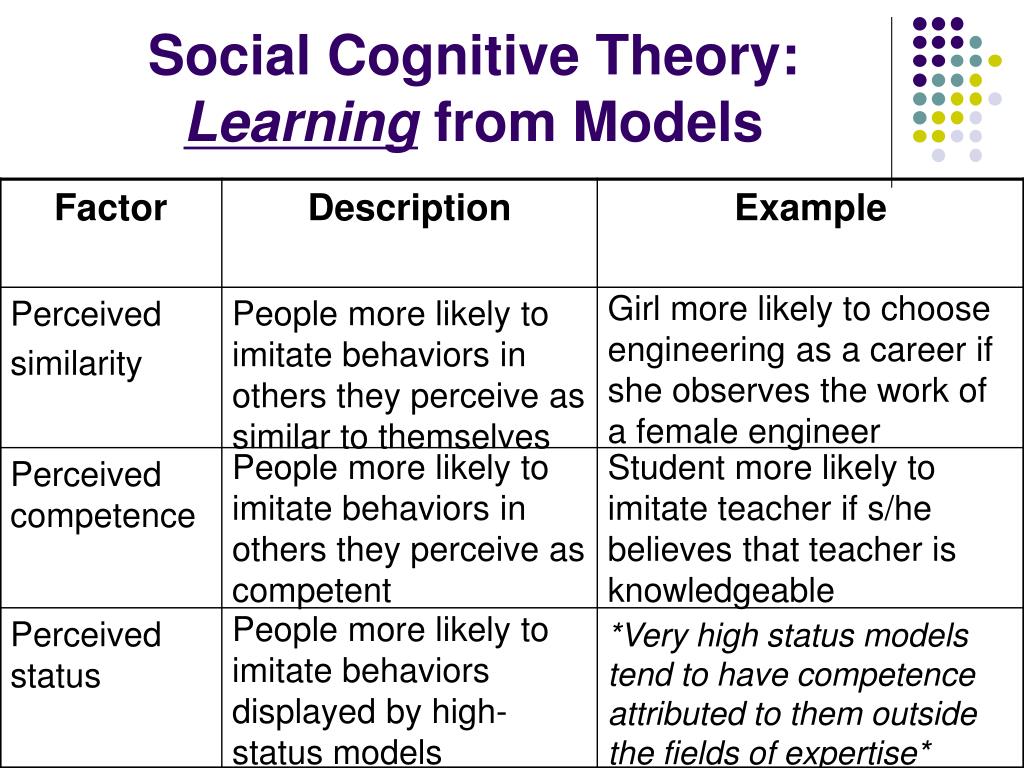
Different Learning Theories
Learning theory tells us how we take in and process information and knowledge. A person’s environment influences his learning. In the case of Pavlov’s dog, for example, the physiologist Ivan Pavlov found that the sound of a metronome produced saliva in a dog’s mouth. The dog was conditioned to hear the sound and associate that sound with food, hence the salivation. This is called classical conditioning.
In operant conditioning, coined by B.F. Skinner, we learn through reinforcement or punishment. We avoid touching a pot of boiling water, for example, because we will burn our fingertips. Skinner developed the operant conditioning chamber, later known as the Skinner Box, to study animal behavior. The chamber or box has a key or bar that can be pressed so that the animal obtains a reward like food or water. Manipulating the key meant food, that is the premise of reinforcement in learning.
What is an example of a classical conditioning?
Food poisoning is a good example of such conditioning. If your first experience of eating a burrito ended in nausea and other contaminated food symptoms, you will likely gag at the smell of future similar dishes.
If your first experience of eating a burrito ended in nausea and other contaminated food symptoms, you will likely gag at the smell of future similar dishes.
What is an example of operant conditioning?
The sales incentive is positive reinforcement in operant conditioning. The quarterly bonus, for instance, is offered to the sales agent who reaches his target goal. And he will likely strive to reach his future goals with such a stimulus.
Essential Reads
Recent Posts
Albert Bandura's Social Learning Theory
Albert Bandura's Social Learning Theory film
Albert Bandura's Social Learning Theory film
Albert Bandura is the author of one of the most popular learning theories. Albert Bandura believed that reward and punishment were not enough to teach new behavior.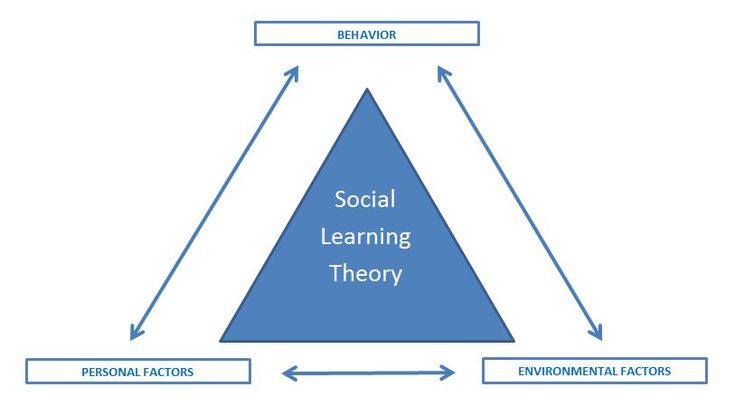 Children acquire new behavior by imitating the model. One of the manifestations of imitation is identification - a process in which a person borrows thoughts, feelings.
Children acquire new behavior by imitating the model. One of the manifestations of imitation is identification - a process in which a person borrows thoughts, feelings.
Albert Bandura's theory proposes to explain the ways in which people acquire a variety of complex behaviors in a social environment.
The main idea of the theory is expressed in the concept of observational learning or learning through observation.
Basic concepts
Bandura talks about the presence of a reciprocal (from Latin reciprocus - returning, reverse, mutual) connection between behavior, subjective and environmental variables. We are not set in motion only by internal forces, we are also not pawns in a game dictated by the prevailing set of circumstances. We are influenced, but we also influence our environment.
Learning in humans is largely determined by the processes of modeling, observation and imitation.
Much human learning occurs without the traditional reinforcement required by the principles of operant and classical conditioning. People can learn in the absence of both reward and punishment. This does not mean, however, that reinforcement is irrelevant. In fact, once a behavior is learned, reinforcement begins to play an important role in determining whether a given behavior will occur. Learning by observation is neither permanent nor automatic. Whether such learning occurs in a given situation is influenced by numerous factors. These factors include the model's age and competence. A person's level of motivation can also improve or degrade modeling, imitation, and observation. People observe and subsequently master a wide variety of social reactions, such as aggression, sexual behavior, ways of emotional response, and much more.
People can learn in the absence of both reward and punishment. This does not mean, however, that reinforcement is irrelevant. In fact, once a behavior is learned, reinforcement begins to play an important role in determining whether a given behavior will occur. Learning by observation is neither permanent nor automatic. Whether such learning occurs in a given situation is influenced by numerous factors. These factors include the model's age and competence. A person's level of motivation can also improve or degrade modeling, imitation, and observation. People observe and subsequently master a wide variety of social reactions, such as aggression, sexual behavior, ways of emotional response, and much more.
Cognitive accent
In his interpretation of the phenomena of observational learning, Bandura proceeds from the widespread use by people of symbolic representations of events in the environment. Without recognition of such symbolic activity, it is extremely difficult to explain the incredible flexibility of human behavior.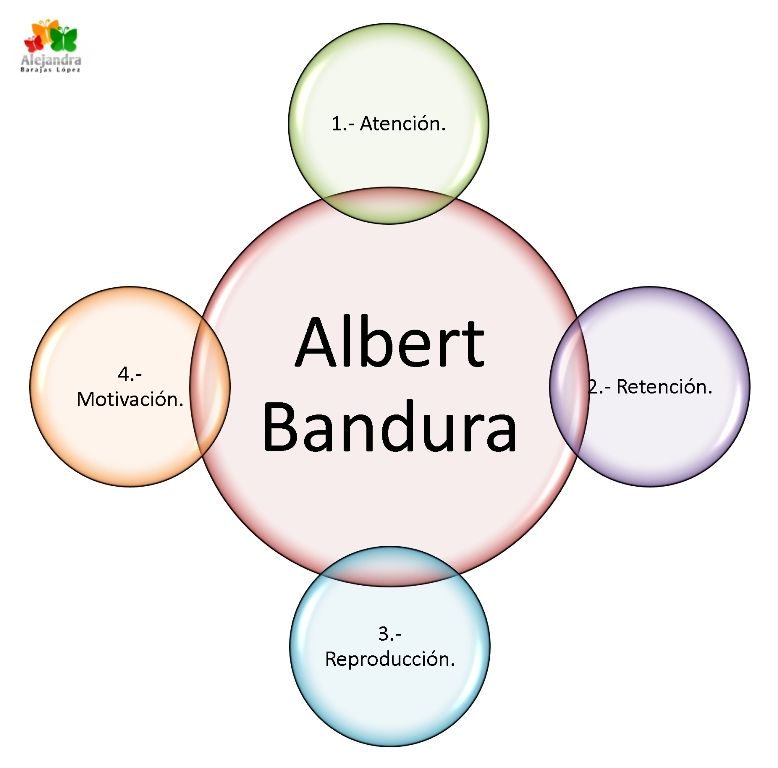 He formulates the thesis that changes in behavior caused by classical and instrumental conditioning, as well as extinction and punishment, are actively mediated by cognitions. Self-regulatory processes also play an important role in human behavior: people regulate their behavior by visualizing its consequences. The formation of links between stimulus and response is influenced by these self-control processes.
He formulates the thesis that changes in behavior caused by classical and instrumental conditioning, as well as extinction and punishment, are actively mediated by cognitions. Self-regulatory processes also play an important role in human behavior: people regulate their behavior by visualizing its consequences. The formation of links between stimulus and response is influenced by these self-control processes.
Walter Mischel continued the emphasis on cognitive factors in his analysis of a range of cognitive variables of social learning in humans. He argues that people differ with respect to several subjective variables, and it is these differences that give rise to the wide variety of individual characteristics that can be observed in others.
These include:
- Various types of competence. They are sets of abilities that influence our thoughts and actions.
- People differ in their coding strategies, in the sense that they represent or symbolize environmental stimulation in different ways.
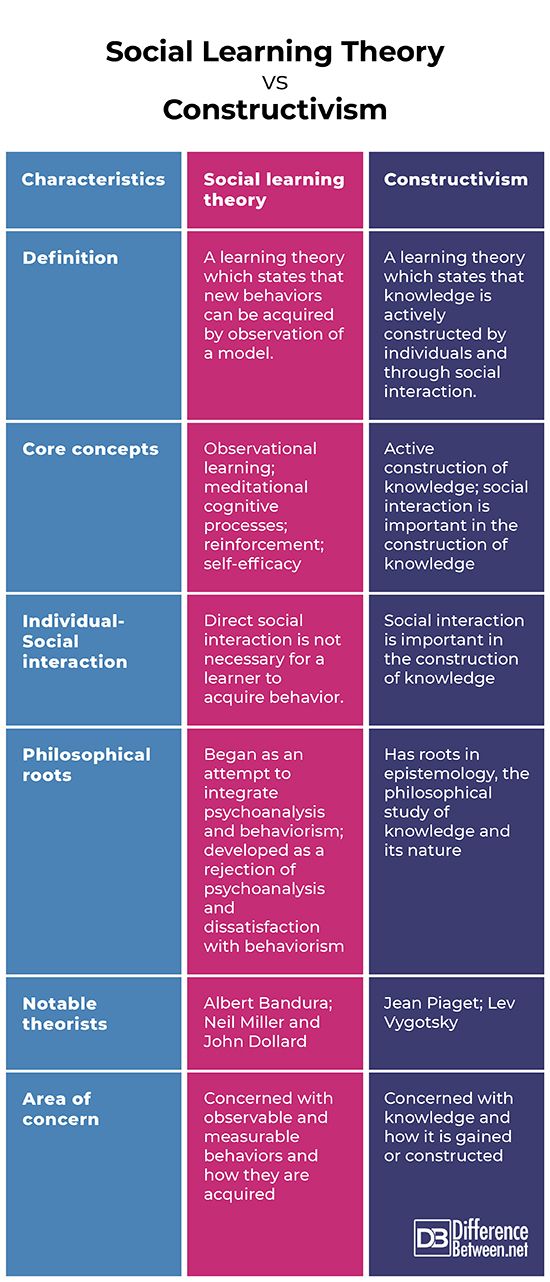
- Expectations or subjective probabilities, reflecting the degree of likelihood that certain behaviors or events lead to certain outcomes.
- Subjective values: people differ in the value they place on different outcomes.
- There are systems and plans for self-regulation: behavior is regulated based on individually set standards.
Behavior change
Bandura's work has played an extremely important role in the development of new approaches to therapeutic intervention. The most notable here was the use of modeling procedures in order to form new cognitive and behavioral competence.
The roots of observational learning can be traced to the work of George Herbert Mead on imitation and vocal gestures. The subsequent analysis of imitation by Neil Miller and John Dollard served as an important starting point for A. Bandura. O. Hobart Maurer's work on sign learning and reward learning has also been a strong influence.
Social learning theory.
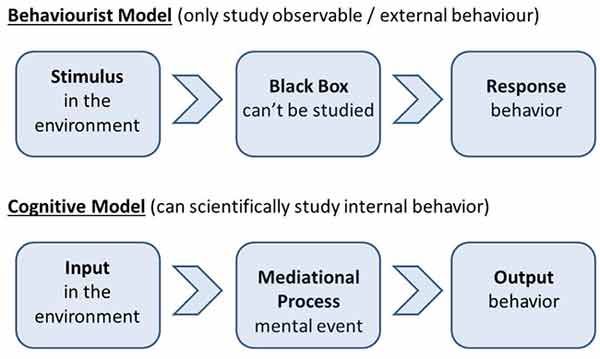 Psychology. People, concepts, experiments
Psychology. People, concepts, experiments Social learning theory
Social learning theory, proposed in 1977, is one of the most significant learning theories in the entire history of psychology. According to this theory, learned behavior should not be considered solely the result of reinforcement, reward, or punishment, but is also developed through learning by observation. Bandura believed that people choose what to do in a given situation, largely based on the behavior of others.
Since childhood, a person is surrounded by models that he can observe: parents, peers, teachers, and even TV show characters. For example, patterns of feminine and masculine behavior are observed and encoded, and later imitated and copied. In this case, the behavior of the one with whom the person feels similar is usually copied; often it is a member of the same sex. We list three main concepts of Albert Bandura's theory of social learning:
1. A person learns a new form of behavior through observation.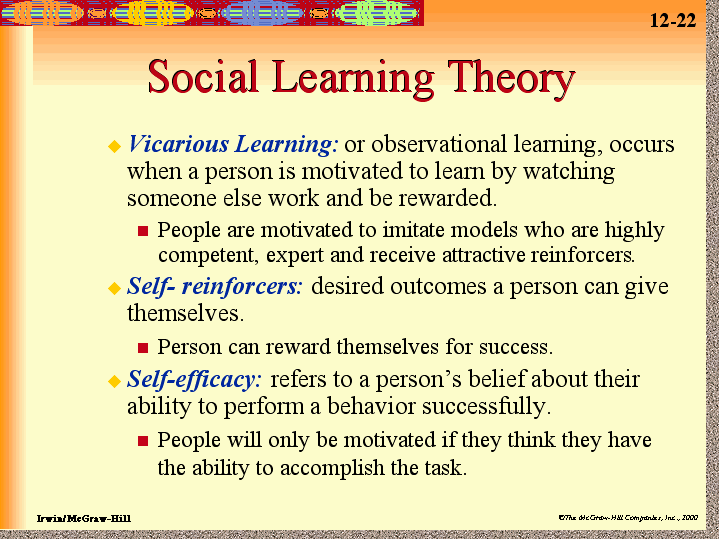 For this, a living model is used (a real person behaving in a certain way), a verbal model that issues instructions (an explanation or description of how one should behave), or a symbolic one (forms of behavior depicted in films, described in books).
For this, a living model is used (a real person behaving in a certain way), a verbal model that issues instructions (an explanation or description of how one should behave), or a symbolic one (forms of behavior depicted in films, described in books).
2. An important aspect of learning is the subjective attitude of a person. Reinforcement from the environment is only one of the factors in learning a new conduction model, but not the only one. For example, satisfaction, pride, and a sense of progress Bandura calls true, or internal, reinforcement. In other words, a person's thoughts and feelings can play an important role in learning a new type of behavior.
3. One cannot assume that a person's behavior will necessarily change in the process of learning. Behaviorists believed that learning leads to permanent changes in behavior, but Bandura has clearly shown that through learning by observation, we can perceive new information without demonstrating the corresponding behavior.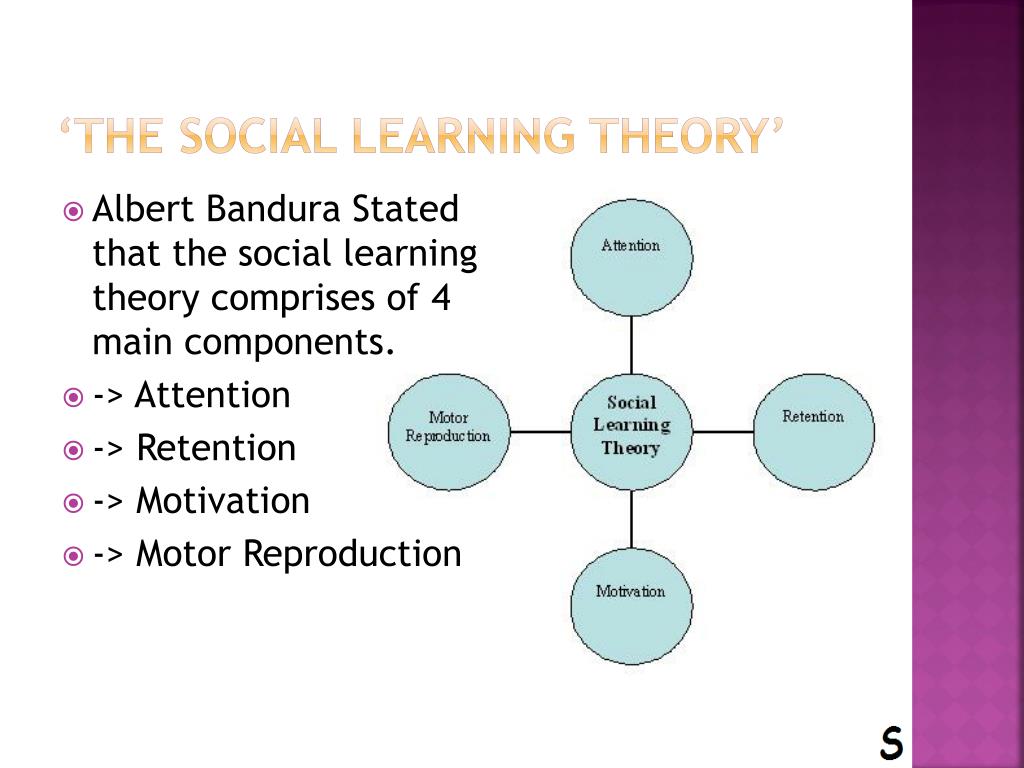 However, observing a new behavior does not mean that a person will learn it. For social learning to be successful, a number of conditions must be met:
However, observing a new behavior does not mean that a person will learn it. For social learning to be successful, a number of conditions must be met:
Attention. To learn something, you need to pay attention to it, and anything that distracts attention is bad for learning by observation.
Save. A person must be able to remember the received information in order to retrieve it later and use it.
Playback. After a person has paid attention to a new form of behavior and remembered the information, it must be translated into action. Practice improves results.
Motivation. To imitate a new form of behavior, a person must have a motive. And this is where reinforcement, reward, and punishment come into play. If the observed behavior is reinforced, the person is more likely to want to copy it; if punishment followed, he is unlikely to have a desire to repeat it.
This text is an introductory fragment.
Social Learning Theory: A Cognitive Challenge
Social Learning Theory: A Cognitive Challenge We have already seen that behaviorism, like any other trend with a well-established system of views, has a long history. John B. Watson raised his voice in support of the "zeitgeist" change in American psychology when
Social learning theory
Social learning theory Foreword In this book, I have attempted to bring the analysis of human thought and behavior into a unified theoretical framework. After all, which aspects of psychological functioning are subjected to more thorough
Innate learning mechanisms
Innate Learning Mechanisms The recognition of the existence of some differences between the degree of ease with which various reactions and conditions of the surrounding world are assimilated has already become a truism.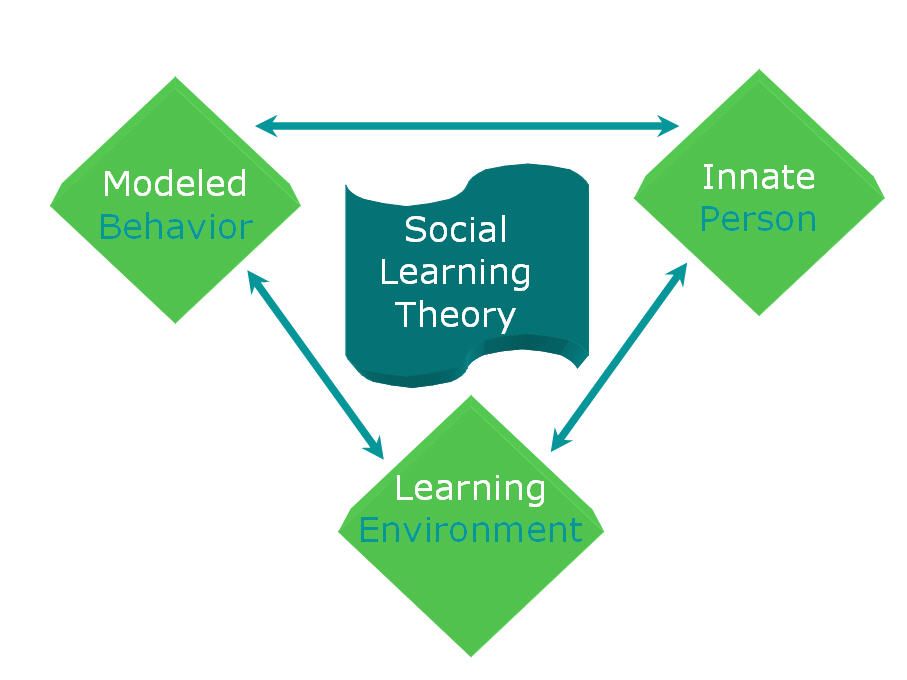 Some differences are due to physiological limitations
Some differences are due to physiological limitations
Social learning theory
Social learning theory Social learning theory, proposed in 1977, is one of the most significant learning theories in the entire history of psychology. According to this theory, learned behavior should not be considered solely the result of reinforcement,
Types of learning
Types of learning Classical conditioningThe foundations of classical conditioning were created at the beginning of the 20th century by IP Pavlov. In Pavlov's experiments, a conditioned stimulus (a bell) is combined with an unconditioned stimulus (feeding a dog), a connection is established between them in such a way that
Behavioral change through social learning
Behavioral change as a result of social learning Learning theorists, including the late B. F. Skinner, have long championed the idea that situational stimuli—the events around us—directly influence our behavior in one of two ways. Being
F. Skinner, have long championed the idea that situational stimuli—the events around us—directly influence our behavior in one of two ways. Being
BF Skinner: Operant Learning Theory Biographical Sketch
B. F. Skinner: Operant Learning Theory Biographical sketch Burres Frederic Skinner was born in 1904 in Susquehanna, Pennsylvania. The atmosphere in his family was warm and relaxed, teaching was respected, discipline was strict, and rewards were given,
Julian Rotter: Social Learning Theory
Julian Rotter: social learning theory At that time, late 1940s - early 1950s, when Julian Rotter began to create his theory, the most significant areas were psychoanalytic and phenomenological theories of personality. According to Rotter, both of these approaches
Social learning theory: basic concepts and principles
Social Learning Theory: Basic Concepts and Principles The focus of Rotter's theory of social learning is the prediction of human behavior in difficult situations.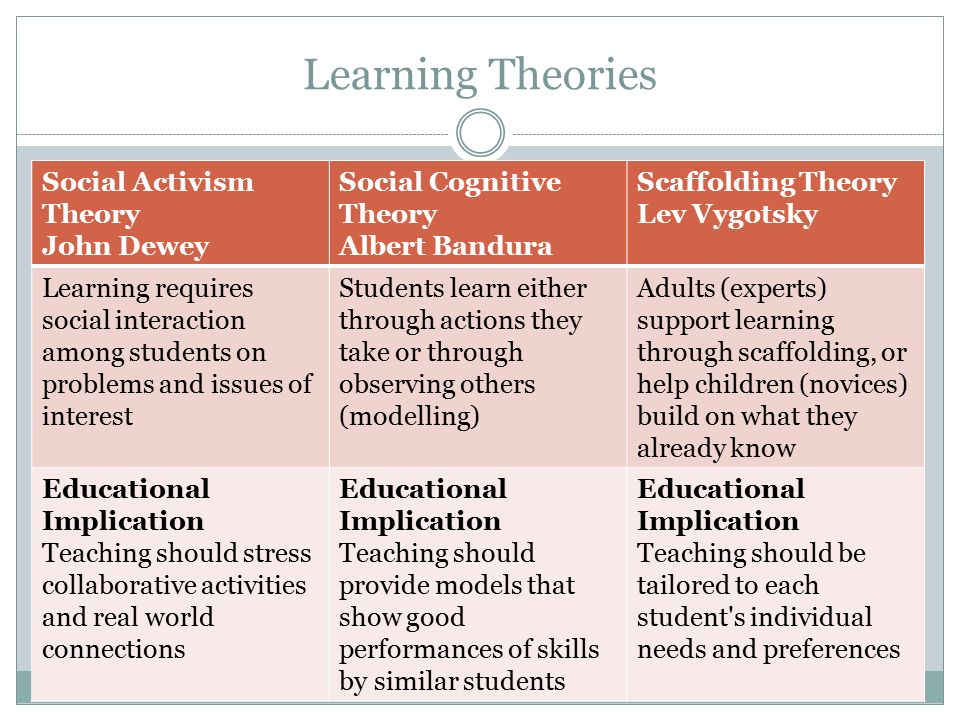 Rotter believes that the interaction of four variables needs to be carefully analyzed. These
Rotter believes that the interaction of four variables needs to be carefully analyzed. These
Chapter 24. Julian Rotter and Social Cognitive Learning Theory
Chapter 24 Julian Rotter and Social Cognitive Learning Theory D. ChernyshevThe theory of Julian Rotter is based on the assumption that cognitive factors contribute to the formation of a person's response to environmental influences. Rotter rejects concept
Application of social learning theory
Applying Social Learning Theory Millon's (1969) treatment of narcissism in terms of social learning theory is not related to the maternal deprivation hypothesis and focuses primarily on the overvaluation of the child by parents. According to
LEVELS AND TYPES OF LEARNING
LEVELS AND TYPES OF LEARNING The ultimate goal of all mental (mental or intellectual) activity of a person is the successful solution of various practical problems that industrial and social life sets before him.